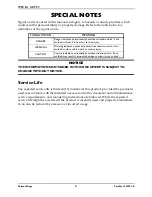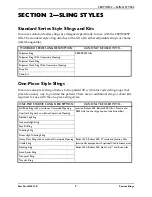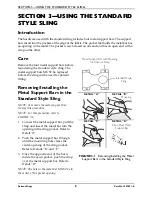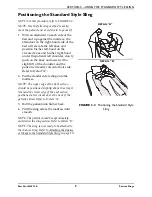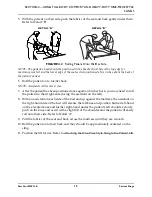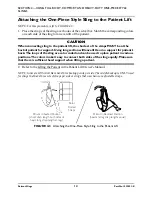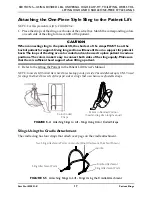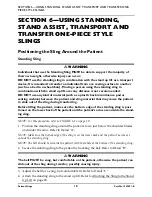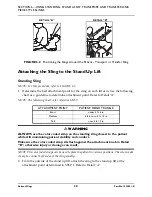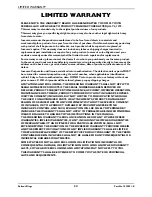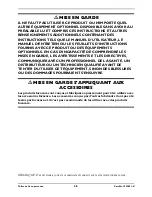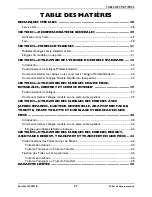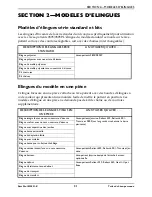
SECTION 5—USING DIVIDED LEG, UNIVERSAL HIGH, EASY-FIT, TOILETING, DRESS TOI-
LETING HIGH AND CRADLE ONE-PIECE STYLE SLINGS
16
2. With the patient sitting in a wheelchair
one assistant in front of the wheelchair
and the other assistant in the back of
the wheelchair, lean the patient
forward. Refer to Detail “A”.
NOTE: The front assistant will be supporting
the weight of the patient.
3. Place the sling behind the patient (with
"grab handle" on the outside) and bring
the flaps out alongside the patient’s
legs. Refer to Detail “B”.
NOTE: Toileting slings have a waist buckle
which helps hold the sling in place during
positioning.
NOTE: For the Divided Leg, Universal High,
Easy-Fit, Dress Toileting High and Cradle
sling: the back of the sling should be parallel to
the patient’s upper arms and be positioned
between the top of the patient’s head and the
base of the spine.
NOTE: For the Toileting Sling: the back of the
sling should be parallel to the patient’s upper
arms and be positioned between the top of the
patient’s midback and the base of the spine.
4. With the back of the sling positioned
properly, push the bottom of the back
section to the seat.
5. Lean the patient back into the
wheelchair with the assistant in the rear
supporting his/her weight.
6. Lift the patient’s legs (one at a time) and
reach under the patient’s leg to pull the
front of the sling until it is behind the
patient’s knees (about 3 inches). The
back of the sling should remain in
position. Refer to Details “C” to “F”.
NOTE: The straps may be around, crossed
between or underneath the patient's legs.
Refer to Detail “G”.
FIGURE 5.3
DETAIL “A”
DETAIL “B”
DETAIL “C”
DETAIL “D”
DETAIL “E”
DETAIL “F”
DETAIL “G”
Underneath
Between
Around



